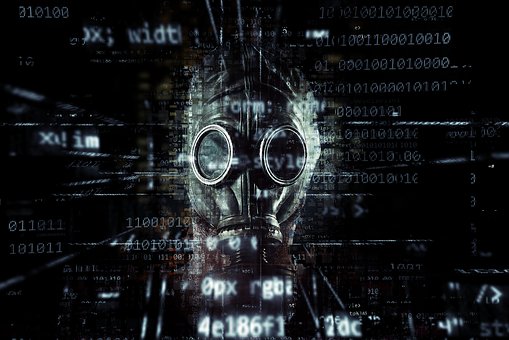De Faakto Intelligence Research Observatory
Novichok Nerve Agent

Methodology
OSINT research
Situation
Novichok-nerve agent-organophosphate
Background
What is Novichok?
Novichok is a chemical warfare nerve agent developed in Russia, recently used in the United Kingdom in an assassination attempt on a former KGB agent and his daughter. Several months later within vicinity of the attack, two more people were poisoned in what has proved to be, accidental contact with Novichok residue. The secondary poisoning resulted in the death of one of the victims.
Novichok is a chemical agent which bypasses prohibition, as a substance not previously declared in chemical weapons treaties. (sciencedirect.com, 2018) Novichok is indiscernible by standard detection equipment and is designed to defeat chemical protective gear. Novichok, a superb chemical weapon for clandestine attacks, can be transported as separate chemicals and assembled at the target, making it less volatile for attackers to transport.
Novichok, a cholinesterase inhibitor has the same mechanism of action as other organophosphate agents. Organophosphates are used in civilian pesticides, industries and pharmaceuticals.
Weaponized organophosphate nerve agents include,
- Tabun
- VX
- Russian VX
- Sarin
- Soman
- Cyclosarin
- O-Ethyl methylphosphonothioic acid (sciencedirect.com, 2018)
How is Novichok Delivered?
- As an Ultrafine powder
- NOT as a gas
- NOT as a vapor
Route of Exposure
Novichok exposure is thought to be via,
- Inhalation
- Contact skin or mucous membrane
Symptoms
There are extensive symptoms for nerve agent poisoning,
SLUDGEM Mnemonic for nerve agents & organophosphate poisoning,
S-salivation
L-lacrimation
U-urination
D-defecation
G-gastrointestinal upset
E-emesis
M-miosis (pupil constriction)
Central nervous system-signs and symptoms
- Miosis (unilateral or bilateral pupil constriction)
- Headache
- Restlessness
- Convulsions
- Loss of consciousness
- Coma
Respiratory system-signs and symptoms
- Rhinorrhea (perfuse watery runny nose)
- Bronchorrhea (excessive bronchial secretions)
- Wheezing
- Dyspnea (shortness of breath)
- Chest tightness
- Hyperpnea
- Bradypnea
Cardiovascular system-signs and symptoms
- Tachycardia
- Hypertension
- Bradycardia
- Hypotension
- Arrhythmias
Gastrointestinal system-signs and symptoms
- Abdominal pain
- Nausea & vomiting
- Diarrhea
- Urinary incontinence
Musculoskeletal system-signs and symptoms
- Weakness-paralysis
Skin and mucous membrane-signs and symptoms
- Profuse sweating
- Lacrimation (Center for Disease Control, 2018)
Treatment for Nerve Agent Exposure
- Atropine
- Pralidoxime
- Diazepam
- Decontamination, removal of clothing
- Skin washed soap water
- Contact lenses removed
- Eyes irrigated 5-10 minutes
- Supportive medical care
- Airway control
- Oxygenation (sciencedirect.com, 2018) (Center for Disease Control, 2018)
Assessment
De Faakto intelligence research indicates that a Novichok/Nerve Agent, attack-incident while rare has occurred on several occasions, presenting significant risk to the public & first responders,
- Novichok was used in the 1995 poisoning of Russian banker Ivan Kivelidi and secretary Zara Ismailova in Russia
- Sarin nerve agent was used in Tokyo subway terrorist attack in 1995
- Sarin nerve agent was used in Syrian civil war 2014 attack on Ghouta
- VX nerve agent used in 2017 assassination of Kim Jong-nam, brother of Kim Jong-un Dictator North Korea
- Novichok used March 2018 in the U.K. an attempt to kill former Russian GRU officer Sergei Skripal and his daughter Yulia
- Novichok was identified in the accidental residual poisoning of Charlie Rowley and Dawn Sturgess in June 2018, linked to the Skripal poisoning
De Faakto risk assessment forecasts, nerve agents including Novichok will be used again in the future and emergency services need to prepare accordingly.
NOTE-There is a Lack of Literature specific to Novichok, therefore some information is based on general nerve agents, organophosphates and VX nerve agent
Recommendations
- Emergency organizations should plan for Novichok incident/attack
- Novichok education and training for front line responders
- Understand Novichok risk, threat, mitigation, recovery cycle
- Consider special teams trained and equipped to deal with Novichok threat
- Ensure proper PPE, special equipment acquired and available for responders
- Consider stocking Atropine, Pralidoxime, Diazepam; in the event of Novichok exposure-this will expedite treatment
- High risk, autonomous, self supporting Military & Para-military units should consider stocking Atropine, Pralidoxime, Diazepam
- Organizations that prepare for Novichok incident/attack benefit from the added value of HAZMAT/CBRNE training for other nerve agent events
Safety
PPE should be proportional to the risk anticipated
- the task workers will do
- degree of contamination
- risk of exposure
First Responders should use a NIOSH-certified Chemical, Biological, Radiological, Nuclear (CBRN) Self Contained Breathing Apparatus (SCBA) with Level A protective suit when entering an area with an unknown contaminant or when entering an area where the concentration of the contaminant is unknown. Level A protection should be used until monitoring results confirm the contaminant and the concentration of the contaminant. (Center for Disease Control, 2018)
Resources
Novichok Agent-Science Direct (2018) https://www.sciencedirect.com/topics/neuroscience/novichok-agent
VX Nerve Agent-U.S. Government-Center for Disease Control (2018) https://emergency.cdc.gov/agent/vx/basics/facts.asp
Nerve Agent and Organophosphate Pesticide poisoning-U.S. Government-Center for Disease Control (2018) https://emergency.cdc.gov/agent/nerve/tsd.asp
Disclaimer-De Faakto Intelligence Research is provided to first responders for situational awareness, advice, guidance and educational purposes. Intelligence is perishable and fluid. Intelligence is updated and reassessed as new information becomes available. Sources are evidence based and multiple sources are used when possible. Sometimes intelligence assessments present gaps in information, this is a reality in intelligence led operations and gaps are filled when information presents. Emergency first responders should always follow best industry practices, organizational policy-procedures and regulatory standards.






